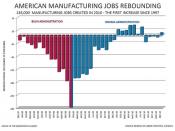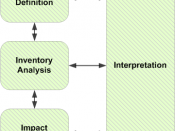High Energy Consumption in Manufacturing
One reason that different technologies exist is that each material absorbs different spectrums of light and requires different thicknesses of material to do so. Each color in the spectrum of light has a different amount of energy.
New inventions, including new technologies, address different limitations of modules improving materials, reducing costs of productions, and creating new applications. By usi.ng these improved technologies, SunPower will increase the efficiency and usability of solar energy.
Using Hazardous Materials in the Manufacturing of the Product
As with most manufacturing processes the use of hazardous chemicals is a necessary evil. SolarPower experiences this just like most other companies. SolarPower must make every effort possible to ensure that the employees and the surrounding communities are protected from the hazards that may be encountered during the manufacturing process. SolarPower has a laboratory at each manufacturing facility staffed with trained technicians that monitor treated water and allows for metals detection below permit levels.
SunPower has implemented a management system for self-auditing that contains a clear set of standards, responses to infractions, and a published schedule of audit dates. SunPower's management is paid according to the results of the scheduled audit. Unfavorable audit results with in turn result in reduction of management compensation.
SolarPower has implemented steps to ensure their process is a safe as possible. Some of the steps they have taken are implementing robust protocols to ensure the safety of workers in their factories and the health of communities.
End of Life Disposal
"Extended producer responsibility (EPR) is a strategy to decrease the environmental impact from a product by making the manufacturer of the product responsible for the entire life-cycle of the product and its packaging, particularly take-back, recycling, and disposition" (Galland, A. 2012). Along with EPR a Life-cycle analysis (LCA)...


